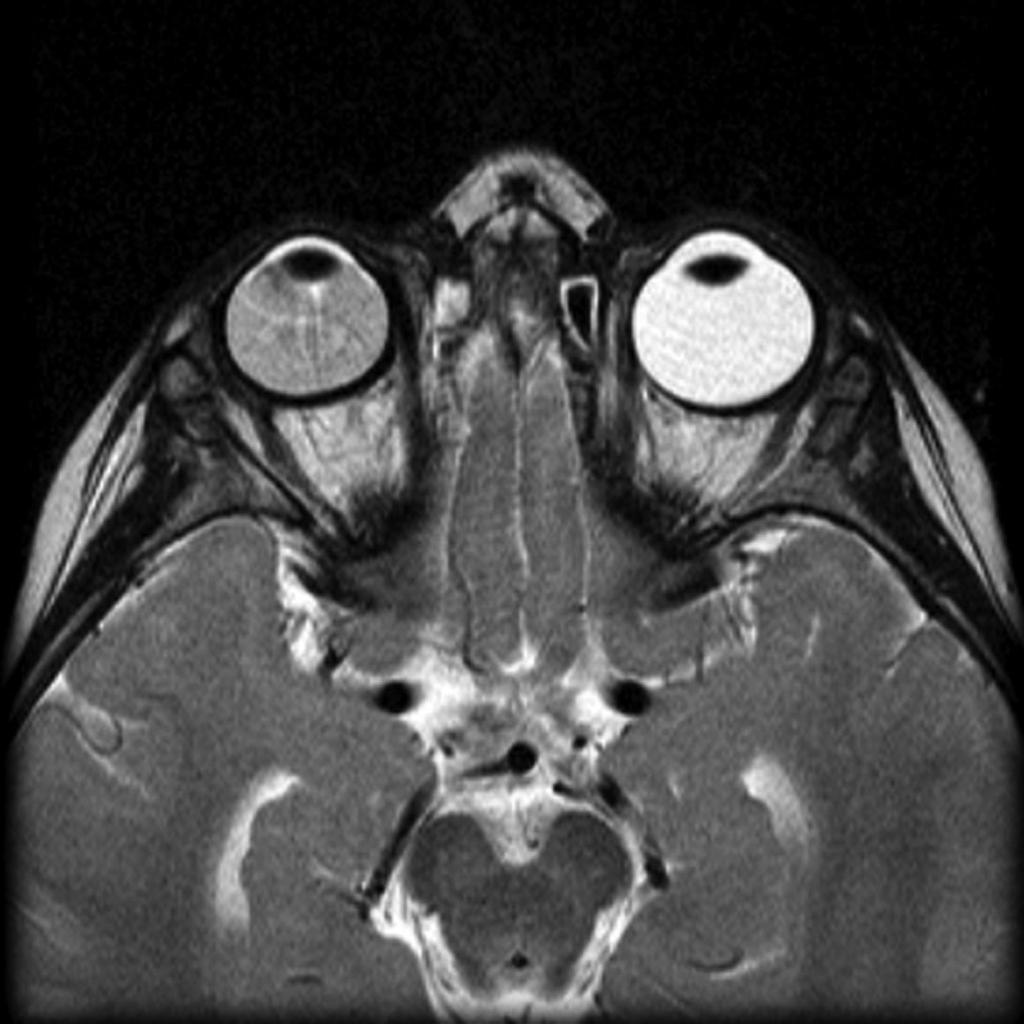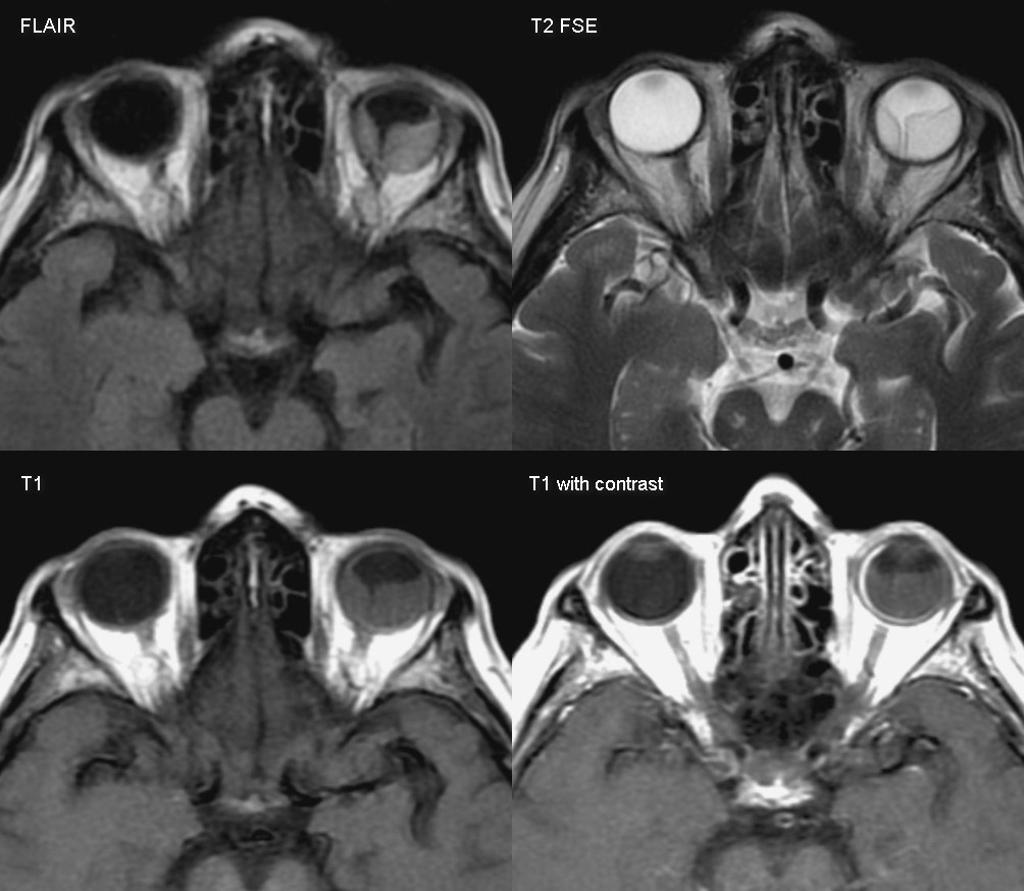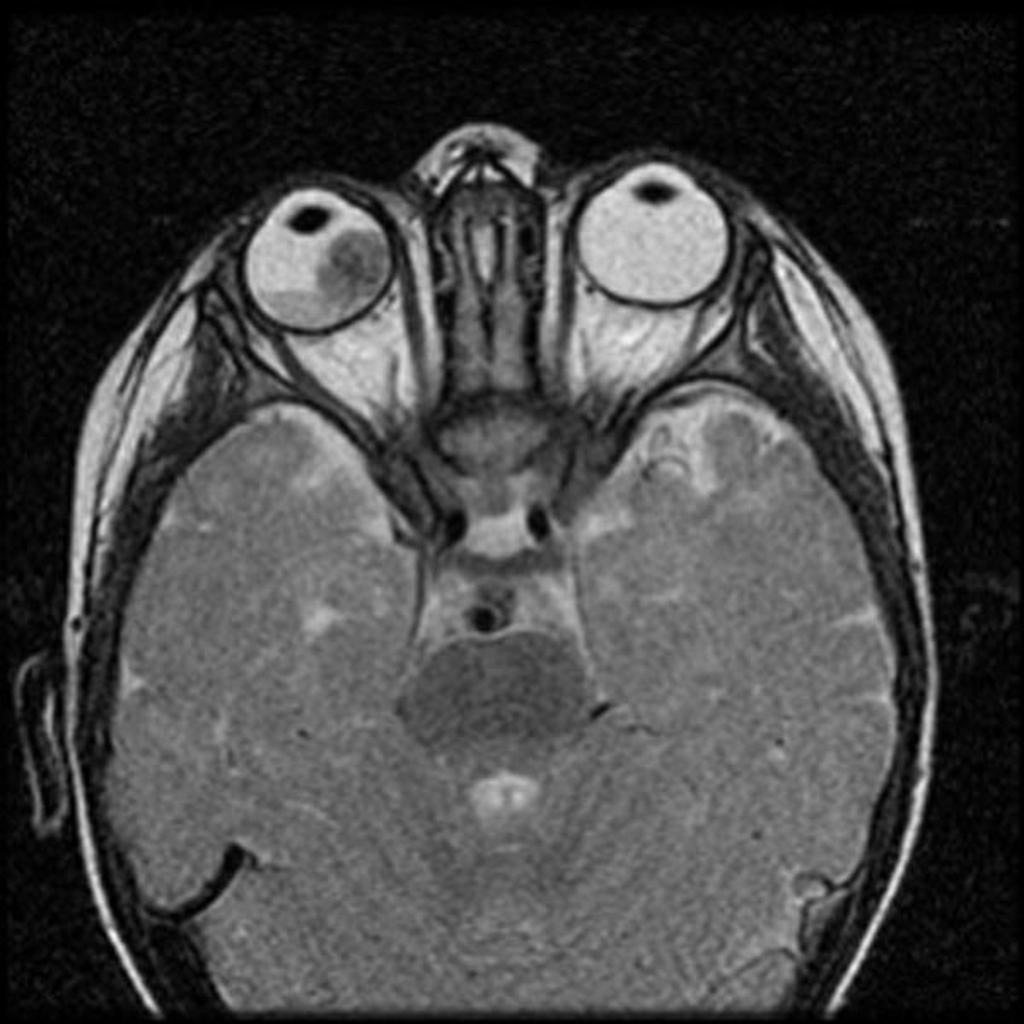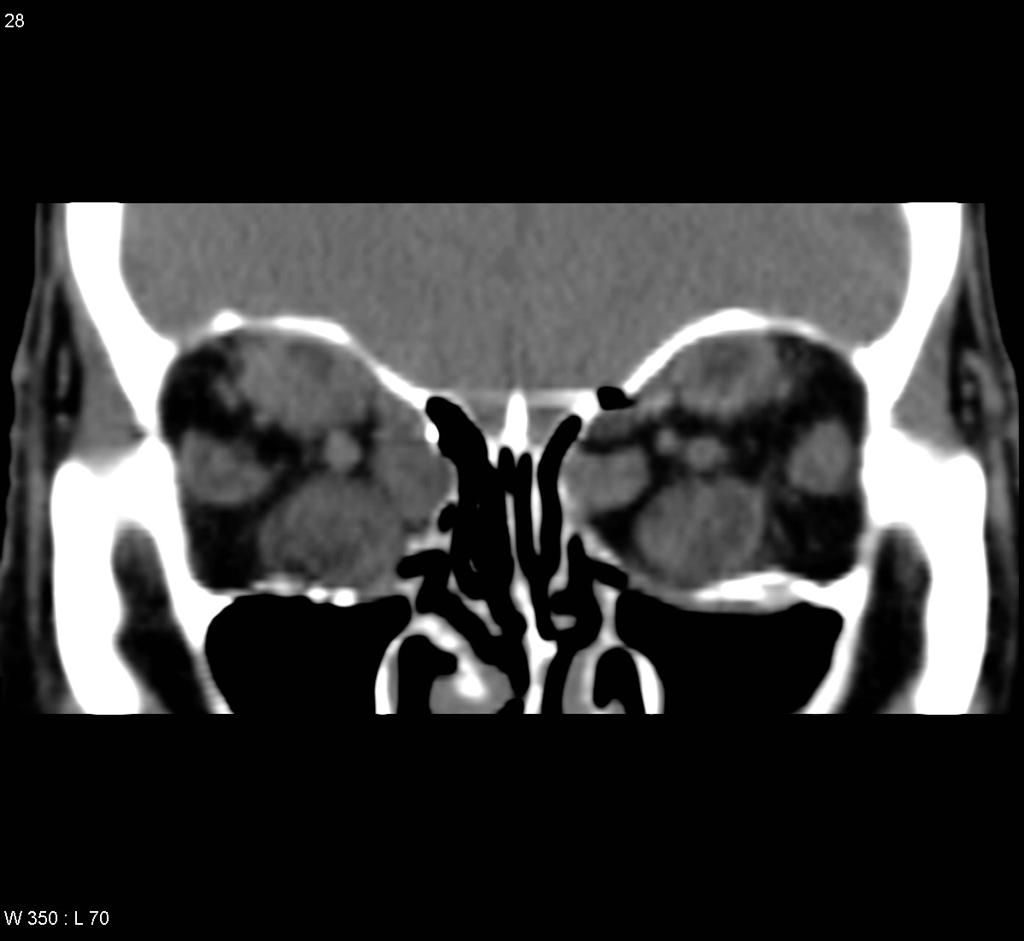Retinoblastoma differential diagnosis: Difference between revisions
Jump to navigation
Jump to search
No edit summary |
|||
| Line 48: | Line 48: | ||
*Associated with [[13q deletion syndrome]] | *Associated with [[13q deletion syndrome]] | ||
|- | |- | ||
| style="padding: 5px 5px; background: #DCDCDC; font-weight: bold" |Coats'disease | | style="padding: 5px 5px; background: #DCDCDC; font-weight: bold" |Coats'disease<ref name="pmid22165951">{{cite journal |vauthors=Silva RA, Dubovy SR, Fernandes CE, Hess DJ, Murray TG |title=Retinoblastoma with Coats' response |journal=Ophthalmic Surg Lasers Imaging |volume=42 Online |issue= |pages=e139–43 |date=December 2011 |pmid=22165951 |doi=10.3928/15428877-20111208-04 |url=}}</ref><ref name="pmid19645389">{{cite journal |vauthors=Gupta N, Beri S, D'souza P |title=Cholesterolosis Bulbi of the Anterior Chamber in Coats Disease |journal=J Pediatr Ophthalmol Strabismus |volume= |issue= |pages= |date=June 2009 |pmid=19645389 |doi=10.3928/01913913-20090616-04 |url=}}</ref> | ||
| style="padding: 5px 5px; background: #F5F5F5;" | | | style="padding: 5px 5px; background: #F5F5F5;" | | ||
* Yellowish appearance of leukocoria | * Yellowish appearance of leukocoria | ||
Revision as of 18:02, 7 May 2019

Editor-In-Chief: C. Michael Gibson, M.S., M.D. [1]: Associate Editor(s)-in-Chief: Simrat Sarai, M.D. [2]
Overview
Retinoblastoma must be differentiated from other diseases that cause leukocoria such as congenital cataract, persistent fetal vasculature, Coats disease, coloboma of choroid or optic disc, toxocariasis, astrocytic hamartoma, retinopathy of prematurity, vitreous hemorrhage, uveitis, retinal dysplasia, and medulloepithelioma.[1]
Differential diagnosis
Retinoblastoma must be differentiated from other diseases that cause leukocoria. The common causes of leukocoria in children include:[1]
- Congenital cataract
- Persistent fetal vasculature
- Coats disease
Less common causes of leukocoria include:
- Coloboma of choroid or optic disc
- Toxocariasis
- Astrocytic hamartoma
- Retinopathy of prematurity (stage 4, 5)
- Vitreous hemorrhage
- Uveitis
- Retinal dysplasia
- Medulloepithelioma
Differential diagnosis of leukocoria
| Disease/Condition | Clinical presentation | Demographics/History | Diagnosis | Other notes |
|---|---|---|---|---|
| Retinoblastoma[2][3] |
|
|
| |
| Coats'disease[4][5] |
|
|
|
|
| PHPV/Persistent fetal vasculature (formerly known as persistent hyperplastic primary vitreous) |
|
|
| |
| Astrocytic hamartoma |
|
|
| |
| Retinopathy of prematurity (ROP) |
|
|
| |
| Ocular toxocariasis |
|
|
|
|
| Hereditary retinal syndrome |
|
|
|
Differentiating features of some common and less common differential diagnosis are:
| Disease/Condition | Age of presentation | Risk factors | Unilateral/bilateral | Differentiating Signs/Symptoms | Axial length | Imaging findings |
|---|---|---|---|---|---|---|
| Retinoblastoma |
|
|
|
|
|
|
| Congenital Cataract |
|
| ||||
| Coats disease (exudative retinitis or retinal telangiectasis) |
|
| ||||
| Persistent fetal vasculature (formerly known as persistent hyperplastic primary vitreous) |
|
| ||||
| Retinopathy of prematurity (ROP) |
|
| ||||
| Ocular toxocariasis |
|
|
| Disease | Prominent clinical feature | Radiological findings |
|---|---|---|
| Ocular cysticercosis |
|
|
| Retinal detachment |
|
|
| Hyperthyroid Ophthalmopathy |
|
|
| Retinoblastoma |
|
|
 |
 |
 |
 |
|---|
References
- ↑ 1.0 1.1 Retinoblastoma. Wikipedia(2015) https://en.wikipedia.org/wiki/Retinoblastoma#cite_note-30 Accessed on October 2, 2015
- ↑ Butros LJ, Abramson DH, Dunkel IJ (March 2002). "Delayed diagnosis of retinoblastoma: analysis of degree, cause, and potential consequences". Pediatrics. 109 (3): E45. PMID 11875173.
- ↑ Sachdeva R, Schoenfield L, Marcotty A, Singh AD (June 2011). "Retinoblastoma with autoinfarction presenting as orbital cellulitis". J AAPOS. 15 (3): 302–4. doi:10.1016/j.jaapos.2011.02.013. PMID 21680213.
- ↑ Silva RA, Dubovy SR, Fernandes CE, Hess DJ, Murray TG (December 2011). "Retinoblastoma with Coats' response". Ophthalmic Surg Lasers Imaging. 42 Online: e139–43. doi:10.3928/15428877-20111208-04. PMID 22165951.
- ↑ Gupta N, Beri S, D'souza P (June 2009). "Cholesterolosis Bulbi of the Anterior Chamber in Coats Disease". J Pediatr Ophthalmol Strabismus. doi:10.3928/01913913-20090616-04. PMID 19645389.
- ↑ 6.0 6.1 "How to Diagnose and Manage Coats' Disease".
- ↑ 7.0 7.1 "Management of retinal detachment: a guide for non-ophthalmologists".
- ↑ 8.0 8.1 "Thyroid Ophthalmopathy - EyeWiki".
- ↑ 9.0 9.1 "c.ymcdn.com".